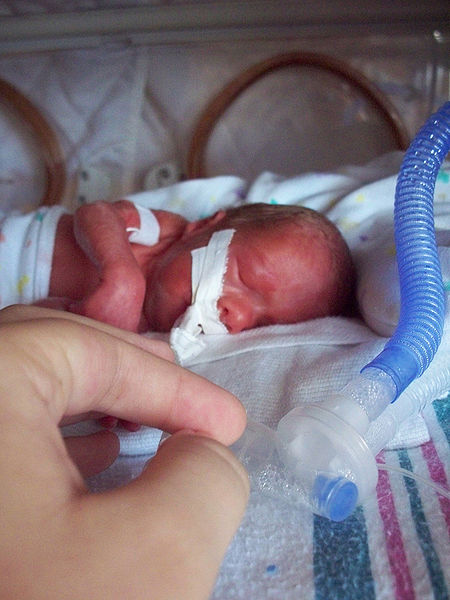Predicting pre-term labour
Interview with
In the UK, around seven in every 100 births is premature, happening before 37 weeks of pregnancy. Happily for mums and their babies, medical advances have brought big changes in survival and long-term outcomes for these tiny tots, but it's still difficult to tell whether a women having early contractions is  just having a false alarm, or is about to go into labour and needs treatments such as steroids to help the baby's premature lungs. Now Stephen Lye and Jan Heng at Mount Sinai Hospital in Toronto have developed a test that uses the levels of gene activity - that's messenger RNA or mRNA - to spot women who are about to deliver early, by looking for genes linked to inflammation, which is part of the natural birth process.
just having a false alarm, or is about to go into labour and needs treatments such as steroids to help the baby's premature lungs. Now Stephen Lye and Jan Heng at Mount Sinai Hospital in Toronto have developed a test that uses the levels of gene activity - that's messenger RNA or mRNA - to spot women who are about to deliver early, by looking for genes linked to inflammation, which is part of the natural birth process.
But what are the limitations of the current tests for early delivery? Kat Arney spoke to Stephen Lye and Jan Heng of Mount Sinai Hospital in Toronto...
Stephen - Some of them rely on clinical parameters, most notably the uterine contractions, the length of the cervix, how open cervix is, and there are some biochemical tests. Together, those tests are reasonably good at having which women will not deliver, but they're not very good at telling which women will actually deliver within the next 48 hours. And so, they're not really good at selecting the women that you really need to treat.
Kat - Jan, can you tell me a bit about the kind of experiments that you were doing to try and solve some of the problems here?
Jan - So, what we did was we collected blood samples from these women that admitted into the hospital with threatened preterm labour. We extracted the blood samples to get their messenger RNA and with that, we applied the mRNA to microarrays which are tiny chips with DNA probes that reflects the whole human genome. Using that chip, we can screen changes and differential expression of genes in the maternal blood that's associated with impending labour.
Kat - So, you're basically looking for genes that are switched on or switched off when a woman is definitely going to go into labour.
Jan - Exactly. So, that was what we did with the microarrays.
Kat - So, you're looking in the mother's blood for these patterns of gene activity. What sort of things did you find?
Jan - So, we found that these genes were associated with inflammation which is expected because we know that labour is an inflammatory process. It is part of the natural progression of labour where the woman gives birth a term of preterm. What we found was that when they're going to preterm labour, the labour process is also inflammatory response. So, the genes gave us an indication that inflammation was occurring in women who were about to deliver. It also gave us information about high activity that there were more genes being transcribed with impending labour.
Kat - How many women were you actually looking at? Did you find the same pattern of genes in all of the ones that were definitely going to go and give birth?
Jan - We collected the samples from Australia. The study had 154 women. Out of 154, 48 of these women delivered a premature baby within 48 hours.
Kat - Did they all show the same patterns of gene activity? How reliable is this if you're going to develop it into a test?
Jan - From our study, our test can correctly identify 7 out of 10 women that will deliver a baby within 48 hours which is better performing than the current test. The advantage of our test is that it can be performed on most women compared to foetal fibronectin because a lot of women are ineligible for it.
Kat - Stephen, tell me about the next steps for this research. You've tested it on around about 150 women. What next?
Stephen - This study was done in collaboration with Dr. Craig Pennell h in Perth, Western Australia. And so now, what we're doing is collecting similar set of samples here in Toronto, just to make sure that the signature for Perth women is the same as the signature for Toronto. And then we hope to take back to a number of centres around the world including the UK. And then following that, it's really on starting to work on the commercialisation of this to turn it into a diagnostic test.
Kat - How soon would you like to see this being a test that could potentially be really beneficial for mothers and their babies?
Stephen - I would hope within 3 to 5 years. If everything goes well, we will have something that is ready for the market.









Comments
Add a comment